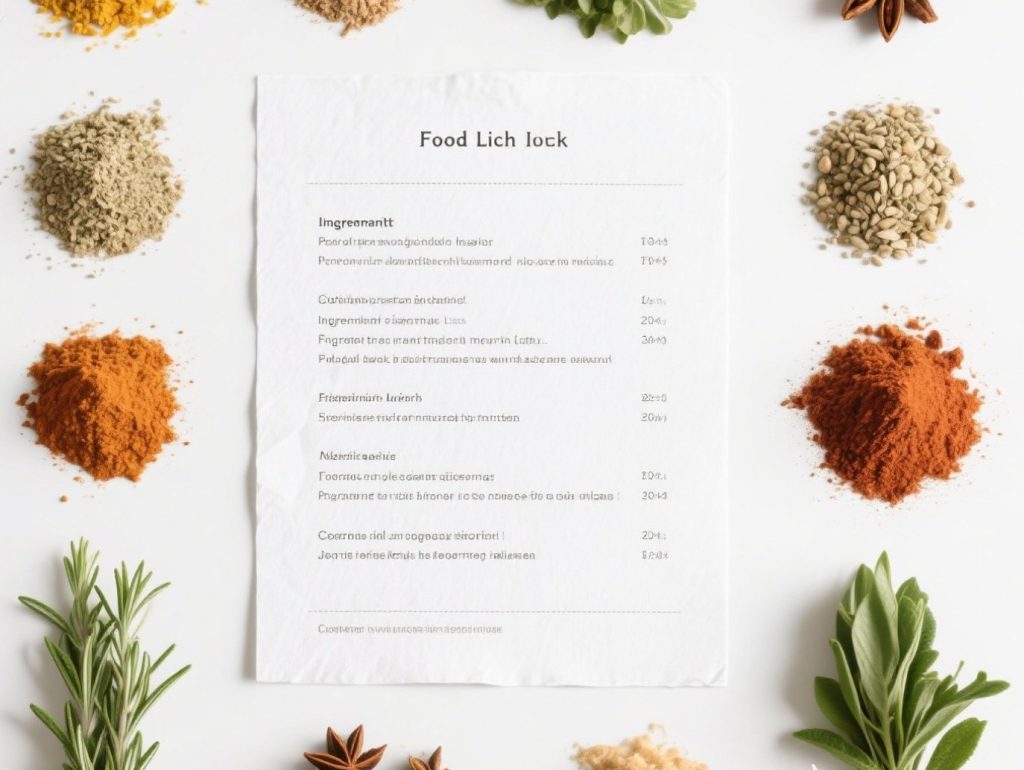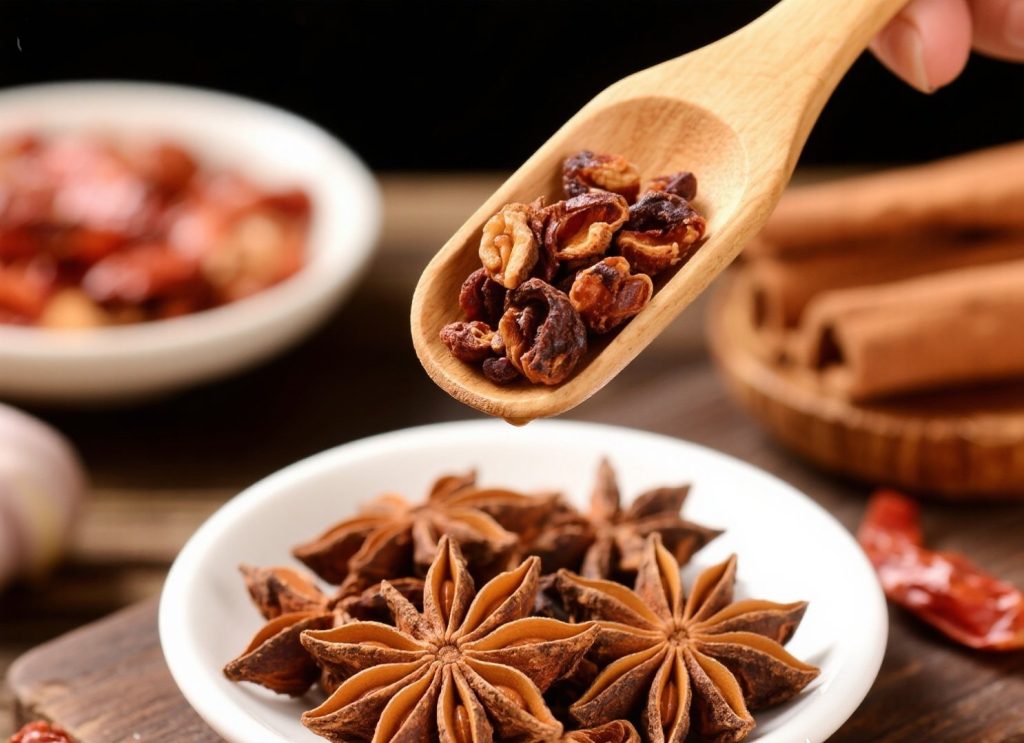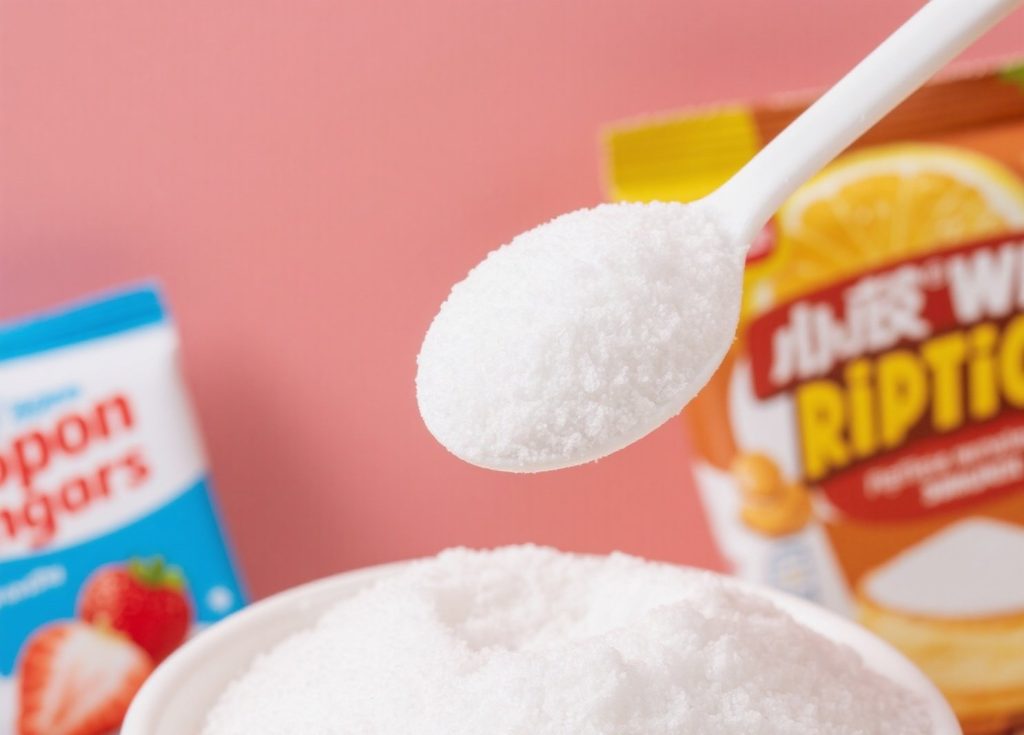Do you know how to read the food ingredient list? What are the common food additives?
How to read the food ingredient list

- The food ingredient in the ingredient list are arranged according to the amount added. The first three positions on the general food ingredient list are the main components of the food, which helps to quickly understand the main composition of the food.
- Simplicity of food ingredient: The simpler or shorter the ingredient list, the better. The fewer ingredients there are, the lower the processing degree.
- Identify additives and pay attention to whether the ingredient list contains sweeteners, colorants, bleaching agents, preservatives, and other food ingredient, as well as whether the content exceeds the standard.
- Pay attention to allergens. If you are allergic to certain foods, pay special attention to whether the ingredient list contains allergens.
- Comprehensive label information includes production date, shelf life, nutritional content table, storage conditions, and other information to comprehensively evaluate food safety. Common food ingredient play a crucial role in the food industry. There are approximately 15000 approved food ingredient worldwide, with over 2300 approved for use in China. Their miraculous effects in color, aroma, taste, quality, and shape greatly enrich our dining experience.
Color: Improve the color of food
Colorant

Colorants are divided into two types: natural colorants and synthetic colorants, which can bring beautiful colors to food.
Long term or one-time consumption of food with excessive pigment content may cause symptoms such as allergies and diarrhea. When the intake exceeds the liver load, it will accumulate in the body and cause certain damage to the kidneys and liver.
Therefore, when choosing food, do not blindly pursue products with overly bright colors or significant differences from actual colors. At the same time, pay attention to the food safety testing results on the official website of the Municipal Market Supervision Bureau.
Color fixative

Color protectants are used to enhance or maintain the stability and effectiveness of food color. Sodium nitrite is a common color protectant in the field of meat and meat product processing, which makes the color of ham and sausage very bright. This red color, protected by sodium nitrite, has amazing stability and can be “tenaciously” maintained even when cooked at high temperatures.
However, sodium nitrite itself has a certain degree of toxicity, and if ingested in large quantities, it may cause toxic reactions such as cyanosis, dizziness, nausea, etc. Ingesting 3-5 grams can be fatal within three minutes. Moreover, under specific conditions, it may be converted into carcinogenic nitrosamines in the human body, posing significant safety hazards. Therefore, great caution must be exercised when using color protectants.
Bleaching agents

Bleaches can be divided into two categories: oxidizing and reducing, which can cause food to fade or avoid browning, thus presenting a purer and more beautiful color. Hydrogen peroxide is a common oxidizing bleaching agent, mainly used for bleaching flour to make it as white as snow
Sodium sulfite in reducing bleaching agents is mainly used in candied fruits, which can prevent the oxidation of polyphenolic substances in fruits, effectively inhibit browning, and maintain the original color of candied fruits.
But bleaching agents not only ensure the color of food, but also come at the cost of sacrificing nutritional content. For example, vitamin C and vitamin B, which are sensitive to redox reactions, can lead to a decrease in their content.
Fragrance: Enhance the aroma of food
Food spices

Food flavorings refer to substances added to food products to produce, modify, or enhance flavors. Currently, GB2760-2024 standard specifies 1892 types of food flavorings allowed for use in China, including 388 natural flavorings and 1504 synthetic flavorings.
Including natural spices such as star anise oil, fennel tincture, garlic oil, natural menthol, bay leaf oil, licorice tincture, etc., synthetic spices such as glycerol, bay alcohol, fennel alcohol, dragon brain, geraniol, cinnamyl alcohol, menthol, etc.
However, the GB 2760-2024 standard also clearly stipulates that some foods shall not be added with food spices and essence. Such as tea, coffee, salt, etc.
Flavor enhancer

Flavor enhancers, also known as freshness enhancers, can enhance the freshness of food. Common flavor enhancers mainly include amino acids and nucleotides.
Amino acids: monosodium glutamate (MSG), L-alanine, aminoacetic acid; Nucleotides: disodium inosinate, disodium guanylate, and monosodium umami nucleotides. They are often used in conjunction with monosodium glutamate to produce a stronger flavor enhancing effect, earning them the nickname ‘strong monosodium glutamate’. Nucleotide flavor enhancers can also increase the viscosity of liquids, making them thicker, so they are commonly found in special soy sauce and soup ingredients.
The use of flavor enhancers also needs to be treated with caution. Studies have shown that excessive intake of monosodium glutamate may cause discomfort symptoms such as headaches, dizziness, and fatigue in some people, which may have a certain impact on human health.
Taste: Improve the flavor of food
Sweetener

Sweetener is a most important of Food ingredient. And sweeteners can be divided into two categories based on their sources: natural sweeteners and artificially synthesized sweeteners, which are used to enhance the sweetness of food.
Acidulant
Acidulants are divided into organic acids and inorganic acids, and have wide applications in industries such as beverages and fermentation. They not only enhance the flavor of beverages, but also have a preservative effect, making them an important raw material in beverage production.
Acidulants include Citric Acid, DL-malic Acid, DL-Tartaric Acid, Fumaric acid, Lactic acid and so on.
Quality: Extend the shelf life of food

Preservative
Food preservatives are a type of food ingredient used to inhibit food spoilage and deterioration, extend storage and preservation periods. There are currently four commonly used types of food preservatives: benzoic acid and its salts, sorbic acid and its salts, propionic acid and its salts, and parabens.
Benzoic acid and its sodium salt are common preservatives that exhibit excellent preservative properties in acidic foods and are widely used in products such as jam and soy sauce.
Potassium sorbate is also a commonly used preservative, with a wide antibacterial spectrum that can effectively inhibit various microorganisms such as mold and yeast. Its presence is often seen in pastries, beverages, and other foods.
However, excessive intake of most preservatives may lead to acute and chronic poisoning, and long-term large intake of preservatives may have adverse effects on the immune system. Therefore, when purchasing food, it is advisable to choose products that do not contain preservatives or have low levels of preservatives, and to consume more fresh, additive free natural foods such as fruits and vegetables to reduce the intake of preservatives.
Antioxidant
Antioxidants can prevent or delay the oxidation, decomposition, and deterioration of oil and other components, ensuring the quality and shelf life of food. Including Vitamin C, Vitamin E, TBHQ, BHA, BTH, tea polyphenols and so on.
However, long-term or excessive intake of certain artificially synthesized antioxidants may lead to liver and kidney damage. For people who smoke or suffer from certain diseases, excessive intake of antioxidants may increase the risk of lung cancer. Therefore, it should be consumed reasonably and natural antioxidants should be chosen as much as possible.
Shape: Shaping the Shape of Food

Emulsifier
Emulsifier is a surfactant whose main function is to reduce interfacial tension, help water and oil in food disperse finely and evenly, and form stable emulsions. Commonly used in dairy products to ensure the uniformity of product texture, resulting in a delicate and smooth taste.
Emulsifiers can be divided into natural emulsifiers and synthetic emulsifiers. Fish gelatin, pectin, and lecithin extracted from eggs, liver, and peanuts are all natural emulsifiers. And the common ingredients in food ingredient lists, such as polysorbate, monoglyceride, diglyceride, polyglycerol ester, tripotassium phosphate, carboxymethyl cellulose, etc., all belong to synthetic emulsifiers. They can be found in ice cream, margarine, butter, and chocolate.
The food emulsifiers allowed for use are relatively safe, and reasonable use will not pose any harm to health. However, cake, chocolate, Dim sum and other foods themselves have high oil, sugar, fat and other factors affecting health. For the sake of health, it is also recommended to consume it reasonably.
Thickener

Thickener can improve the viscosity of food or promote it to form gel, thereby subtly changing the physical properties of food, giving food a sticky and suitable taste. Whether it is soft pudding, mellow jam or chewy soft candy, thickener silently shapes their perfect shape.
Thickeners can be divided into natural thickeners and synthetic thickeners. Including Pectin, Gelatin, Arabic Gum, Agar Agar, Xanthan Gum, Sodium Alginate, Guar Gum, Carrageenan and so on.
A Quite Review of Food ingredient
Food ingredient play a crucial role in improving food quality, extending food shelf life, and enhancing food color, aroma, and taste. They are safe when used legally, while illegal activities such as using food additives beyond their limits and adding non edible substances are the root causes of food safety issues.
Many foods often contain more than ten or twenty types of food ingredient, which can cause harm to the body when mixed together. When choosing products, it is advisable to compare the ingredient list more, purchase products with fewer additives, reduce the intake of food ingredient, and protect the safety of the tongue!
Our Hangzhou Health Sweet Biotech Corporation is a professional Food ingredient and Nutrition ingredient supplier for more than 15 years. Welcome to contact us to discuss food ingredient business all the time.

